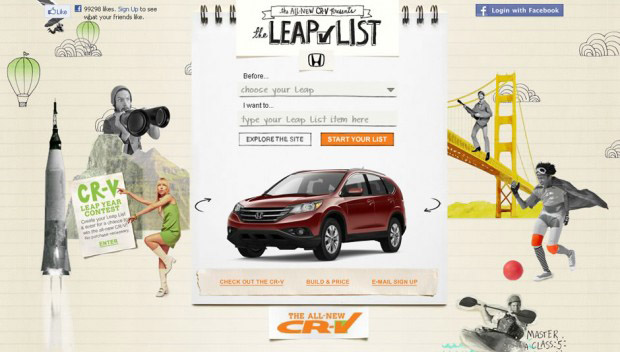

What does the idea of a bucket list mean to you? In theory, the commonly acknowledged
definition of this form of list is a collection of ideas which one gathers together in hopes
of accomplishing before one "kicks the bucket" which in reality means, before one passes away.
In today's day and time, this concept can and has been looked at in several ways. Visually
and linguistically, we are constantly being faced by mediated artifacts throughout society
that enforce ideas of what we should be doing with our lives, how we should be doing them,
as well as why and when we should be doing them. It is a way that society and the media are interrelated
in controlling the lives of the people/consumers. Images often determine a consumer's attitude
as well as emotions concerning a specific product. Consumers many times find that it is easy to relate their emotions towards these
images/products to what society and the media are saying is necessary to obtain and accomplish
from them. "We often don't realize the underlying message contained within advertisements
which actually contracts these particular emotions." (Avaet, Jamar; Pham, Michael Tuan; Stephen, Andrew
T.) It is often times the hidden message; the message that is not directly right in front of
us is then to lead us to a particular sense of feeling. This idea of a bucket list has
transcended from being a concept to rather a "check off" before one's time on Earth
reaches an end, to the idea that getting married, having children, graduating college, etc. all
are to be significant milestones in one's life; a time when you end one momentous time and
shift your direction and focus towards another. However, what is being implied all around us
is that we are to directly feel inclined to live our life based on the guidelines of how society
has designed for us to live.
Producers take a significant amount of pride in relying on these sense of emotions to attract consumers
into buying into their products through their visual effects added into advertisements of
nearly every imaginable idea. "Feelings are perceived to be more relevant for assessing the potential
fulfillment of instrumental goals." (Avaet, Jamar; Pham, Michael Tuan; Stephen, Andrew T.)
It has been researched that on average, there is a greater effect
on consumers if they have been perceived as a targeted audience by the producers themselves.
"Ego-focused emotions are experienced during situations in which one focuses on oneself as the
central person, independent from others." (Burke, Barbara Ruth)Consumers are more likely to
be drawn towards a product if they themselves are personally affected.
Producers take initiative in addressing the emotions of the consumers as that is what is considered to be
key in attracting their desire towards a product. Advertisers/Producers produce advertisements
in hopes that the targeted audience will experience certain emotions. This follows up the idea that, "An advertising stimulus
can activate the affective system." (Moore, David J; Lee, Seung Pil.) We feel what they want
us to feel, sometimes without even being fully aware that it is occurring.
Throughout this text, I will walk you through two different Honda CR-V advertisements that are looking to attract the emotions of the consumer with their underlying message being implied that it is necessary for us to be effected by the way we choose to live life and how what we consume for personal satisfaction can lead to living life in a satisfactory manner. It is necessary for viewers to understand the way that it is intended to read into the ideas within these underlying messages that have been provided. "Media literacy is a perspective that we in turn actively use when exposing ourselves to the media in order to better be able to interpret the meaning of the messages in which we encounter. (Yoon, Sukki; Patrick T, Vargas) It is the way we the consumers interpret what has been intended for us to interpret.
By grasping the concept of these messages, self-control and self-regulation are internal feelings which develop that often depend on the changing of moods one may experience due to the tone of the advertisement that is created. This impulsive form of behavior is understood to be a form of behavior that is not regulated and then results from an unplanned spontaneous impulse. This is one idea that is initially behind the concept of creating a bucket list. It is the idea of doing something without looking back, but to instead go with your initial instinct. "The ability to alter one's own responses is one of the most important features of the human psyche and is substantially responsible for the immense range and diversity of human behavior as well as for the adaptive successes of our species." (Faeseur, Tine Maggie) It is apparent that the producers are aware of how to direct the attention towards the products that then satisfy the consumer's desire of not only being happy, but as well as being happy with what has been obtained, and how what has been obtained can then reflect on the personal feelings regarding the consumer's way in life.
a class taught by Bob Bednar in the Communication Studies Department at Southwestern University